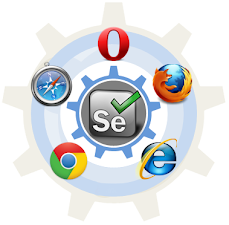Data-Driven Testing with Selenium WebDriver
Data-driven testing is a robust testing methodology that focuses on testing the functionality of an application using multiple sets of data. Instead of hardcoding input values and expected results, this approach separates test logic from the test data, enhancing reusability and maintainability. Selenium, being a popular automation tool, supports data-driven testing seamlessly when integrated with testing frameworks like TestNG or JUnit.
In this blog, we’ll delve into the concept of data-driven testing, explore its benefits, and demonstrate how to implement it using Selenium with detailed coding examples.
What is Data-Driven Testing?
Data-driven testing involves executing test scripts multiple times with different sets of input data. The test data is typically stored in external sources such as:
-
Excel files
-
CSV files
-
Databases
-
JSON or XML files
This approach is particularly useful for validating applications where the same functionality needs to be tested with various input combinations.
Benefits of Data-Driven Testing
-
Reusability: Test scripts are reusable for different data sets.
-
Maintainability: Test logic is separated from test data, making maintenance easier.
-
Scalability: Allows extensive test coverage with diverse data.
-
Efficiency: Reduces redundancy in writing test scripts.
Tools Required
-
Selenium WebDriver: For browser automation.
-
Apache POI: To read/write data from Excel files.
-
TestNG/JUnit: For test execution and data provider functionality.
Setting Up Your Project
Add Dependencies
Include the following dependencies in your pom.xml if you’re using Maven:
<dependencies>
<dependency>
<groupId>org.seleniumhq.selenium</groupId>
<artifactId>selenium-java</artifactId>
<version>4.10.0</version>
</dependency>
<dependency>
<groupId>org.apache.poi</groupId>
<artifactId>poi</artifactId>
<version>5.2.3</version>
</dependency>
<dependency>
<groupId>org.apache.poi</groupId>
<artifactId>poi-ooxml</artifactId>
<version>5.2.3</version>
</dependency>
<dependency>
<groupId>org.testng</groupId>
<artifactId>testng</artifactId>
<version>7.8.0</version>
</dependency>
</dependencies>
Code Example: Data-Driven Testing Using Excel and TestNG
Step 1: Create the Test Data
Create an Excel file named TestData.xlsx with the following columns:
| Username | Password |
|---|---|
| user1 | pass1 |
| user2 | pass2 |
Save this file in the project directory.
Step 2: Utility Class to Read Excel Data
Create a utility class ExcelUtils.java:
import java.io.FileInputStream;
import java.io.IOException;
import org.apache.poi.ss.usermodel.*;
public class ExcelUtils {
private static Workbook workbook;
private static Sheet sheet;
public static void loadExcel(String filePath) throws IOException {
FileInputStream fis = new FileInputStream(filePath);
workbook = WorkbookFactory.create(fis);
}
public static String getCellData(int row, int column) {
sheet = workbook.getSheetAt(0);
Row rowData = sheet.getRow(row);
Cell cell = rowData.getCell(column);
return cell.toString();
}
public static int getRowCount() {
return sheet.getLastRowNum();
}
}
Step 3: Test Class with Data Provider
Create a test class LoginTest.java:
import org.openqa.selenium.By;
import org.openqa.selenium.WebDriver;
import org.openqa.selenium.WebElement;
import org.openqa.selenium.chrome.ChromeDriver;
import org.testng.annotations.*;
public class LoginTest {
WebDriver driver;
@BeforeClass
public void setup() {
System.setProperty("webdriver.chrome.driver", "path_to_chromedriver");
driver = new ChromeDriver();
driver.get("https://example.com/login");
}
@DataProvider(name = "loginData")
public Object[][] loginData() throws Exception {
ExcelUtils.loadExcel("TestData.xlsx");
int rowCount = ExcelUtils.getRowCount();
Object[][] data = new Object[rowCount][2];
for (int i = 1; i <= rowCount; i++) {
data[i - 1][0] = ExcelUtils.getCellData(i, 0);
data[i - 1][1] = ExcelUtils.getCellData(i, 1);
}
return data;
}
@Test(dataProvider = "loginData")
public void testLogin(String username, String password) {
WebElement usernameField = driver.findElement(By.id("username"));
WebElement passwordField = driver.findElement(By.id("password"));
WebElement loginButton = driver.findElement(By.id("login"));
usernameField.sendKeys(username);
passwordField.sendKeys(password);
loginButton.click();
// Add assertions here to verify login success or failure
}
@AfterClass
public void teardown() {
driver.quit();
}
}
Best Practices for Data-Driven Testing
-
Use External Data: Store test data in external files to reduce script changes.
-
Parameterize Test Cases: Avoid hardcoding data in test scripts.
-
Error Handling: Implement robust error handling for file operations.
-
Optimize Performance: Load test data only once if possible.
-
Clear Test Data: Ensure the test environment is reset before each run.
Advantages of Data-Driven Testing with Selenium
-
Flexibility: Easily test multiple scenarios by changing input data.
-
Enhanced Coverage: Test edge cases by providing varied data sets.
-
Reduced Redundancy: Write fewer scripts for multiple test cases.
Conclusion
Data-driven testing is a vital strategy for efficient and thorough test automation. By combining Selenium with tools like Apache POI and TestNG, you can create scalable and maintainable test suites that cover a wide range of scenarios. Implement this approach to enhance your testing process and ensure high-quality software delivery.
Keywords: Data-Driven Testing, Selenium, TestNG, Apache POI, Automation Testing, Excel Integration, Test Automation Framework.









.png)









Comments
Post a Comment